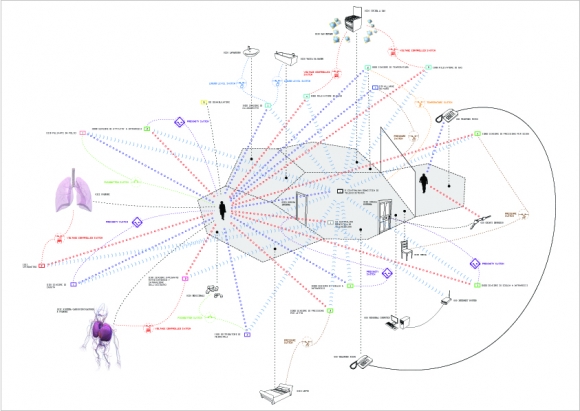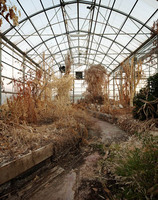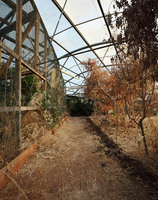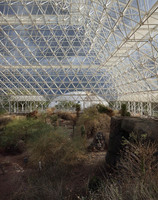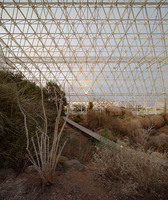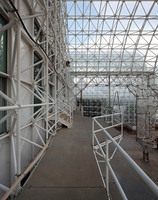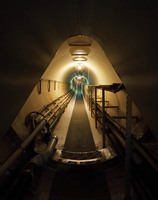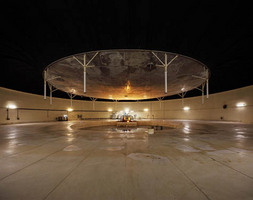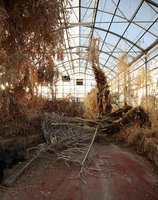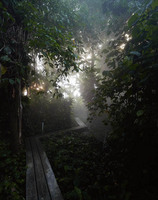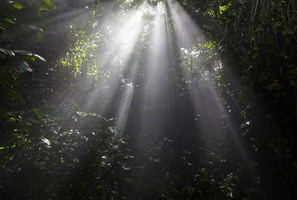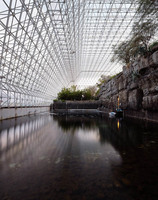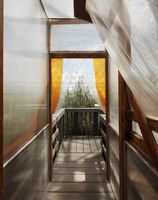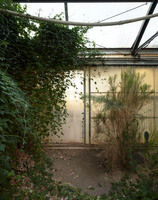Monday, October 29. 2012
Programmers are the New Art World Renegades
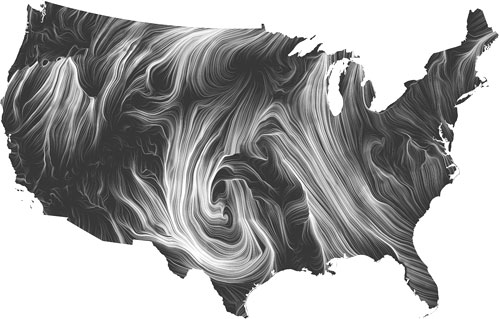
A visualization from researchers at Google shows wind flowing over the United States.
Just as photography was a controversial new art form in the late 19th century (critics questioned the role of the artist if the machine ultimately produced the work), it seems computer programmers have yet to be fully accepted into the art world.
This much was clear at the first Leaders in Software and Art (LISA) Conference, which took place at the GuggenheimMuseum in New York last week. The conference grew out of the LISA Salons that conference organizer Isabel Draves has hosted for three years in an effort to create a sense of community among software artists.
Panel discussions at the event addressed questions about the place of software art in history. Draves said in her opening remarks that it could even become the next big artistic movement: "something has to come after post-modernism. It's only a matter of time" before media art takes its rightful place in history.
But software art—images, videos, and interactive content created by programming computers—is still experiencing resistance from the mainstream art community, according to Draves and others at the conference. While the field is decades old, they said, it still hasn't been accepted as a mainstream art form.
Panel discussions included media art collectors, museum curators and new media artists asking how does one evaluate, collect and distribute this kind of art? How can social media and crowd sourcing play a role in art? And how does software change the language of art and the space in which it is exhibited?
Much of the rest of the event was dedicated to celebrating work that could perhaps help convince some of those doubters.
Keynote speaker Scott Snibbe called the computer “the ultimate looking glass” through which to create alternate universes. His work with musician Bjork on the first app album Biophilia (October, 2011) is exactly that: a cosmos of clickable constellations, each of which leads to an “interactive” song over which the user has some control. His forthcoming project is an interactive app for REWORK_Philip Glass Remixed (out this month).
Of the lightening speakers there were several standouts. Data visualization expert Martin Wattenberg, half of two-person team leading the “Big Picture,” visualization research team at Google, presented the Wind Map which displays data from the National Digital Forecast Database with brush-stroke beauty across a map of the United States. His colleague, Fernanda Viegas, showed edit wars in the Wikipedia entry for “chocolate” by colorfully charting each change made to the page. What looks like a zig-zagging artistic effect is in fact a scuffle over the roots of chocolate “coulage”.
Bang-Geul Han showed her Blogreader project, a haunting video in which she sits on a stool in a snowy plane robotically telling personal narratives. The narratives are pulled from blog entries by a Perl script from a now-defunct site called teenagediary.com. She recorded herself reading 3800 of the site’s most frequent words and played them back in the stark visual context. If a word existed in the blog but wasn’t recorded it appears in text on the video. The effect is a visual and audio disconnect from the emotional content of the blogs, many of which recount crushes and heartbreaks.
a haunting video in which she sits on a stool in a snowy plane robotically telling personal narratives from others' blog entries. She recorded herself reading blog entries in front of camera, and wrote a program that grabbed new blog entries every 5 minutes, and turned them into a strings of text that are matched against the pre-recorded words. The effect is a visual and audio disconnect from the emotional content of the blogs, many of which recount crushes and heartbreaks.
Jake Barton, founder of Local Projects, which was involved in the 911 Memorial Museum, talked about his design for an interactive addition to the Cleveland Museum of Art. The display will show the museum's entire collection on a digital panel through which users can create their own collections sorted by theme. For example, if a user searches for art depicting “Love and Lust” the panel would display the racier paintings and sculptures in the collection. The new space opens in January.
Karolina Sobecka's work might've been the most haunting: virtual storefronts housing crowds that don't exist but which nevertheless turn to look at passersby. And a virtual dog that, using tracking software, follows the viewer as if it could see and sniff.
And the most popular of the bunch, Golan Levin, showed work he feels should be “driven by civic concerns and conscience.” When his son noticed that the parts of the toys he played with don't work together (Legos, Tinkertoys), Levin created the Free Universal Construction Kit, 3D printed parts that allow the two divergent toy species to mate.
Mainstream or not, several of the works displayed reflected the very best of the overlap between art and science.
Tuesday, May 03. 2011
Talking to the Wall
-----
By Kate Greene
 |
| Up in the air: Using an experimental interface, a person acts as an antenna for stray electromagnetic radiation in the environment. Credit: Microsoft Research |
Our lives are awash with ambient electromagnetic radiation, from the fields generated by power lines to the signals used to send data between Wi-Fi transmitters. Researchers at Microsoft and the University of Washington have found a way to harness this radiation for a computer interface that turns any wall in a building into a touch-sensitive surface.
The technology could allow light switches, thermostats, stereos, televisions, and security systems to be controlled from anywhere in the house, and could lead to new interfaces for games.
"There's all this electromagnetic radiation in the air," says Desney Tan, senior researcher at Microsoft (and a TR35 honoree in 2007). Radio antennas pick up some of the signals, Tan explains, but people can do this too. "It turns out that the body is a relatively good antenna," he says.
The ambient electromagnetic radiation emitted by home appliances, mobile phones, computers, and the electrical wiring within walls is usually considered noise. But the researchers chose to put it at the core of their new interface.
When a person touches a wall with electrical wiring behind it, she becomes an antenna that tunes the background radiation, producing a distinct electrical signal, depending on her body position and proximity to and location on the wall. This unique electrical signal can be collected and interpreted by a device in contact with or close to her body. When a person touches a spot on the wall behind her couch, the gesture can be recognized, and it could be used, for example, to turn down the volume on the stereo.
So far, the researchers have demonstrated only that a body can turn electromagnetic noise into a usable signal for a gesture-based interface. A paper outlining this will be presented next week at the CHI Conference on Human Factors in Computing Systems in Vancouver, BC.
In an experiment, test subjects wore a grounding strap on their wrist—a bracelet that is normally used to prevent the buildup of static electricity in the body. A wire from the strap was connected to an analog-to-digital converter, which fed data from the strap to a laptop worn in a backpack. Machine-learning algorithms then processed the data to identify characteristic changes in the electrical signals corresponding to a person's proximity to a wall, the position of her hand on the wall, and her location within the house.
"Now we can turn any arbitrary wall surface into a touch-input surface," says Shwetak Patel, professor of computer science and engineering and electrical engineering at the University of Washington (and a TR35 honoree in 2009), who was involved with the work. The next step, he says, is to make the data analysis real-time and to make the system even smaller—with a phone or a watch instead of a laptop collecting and analyzing data.
"With Nintendo Wii and Microsoft's Kinect, people are starting to realize that these gesture interfaces can be quite compelling and useful," says Thad Starner, professor in Georgia Tech's College of Computing. "This is the sort of paper that says here is a new direction, an interesting idea; now can we refine it and make it better over time."
Refining the system to make it more user-friendly will be important, says Pattie Maes, a professor in MIT's Media Lab who specializes in computer interfaces. "Many interfaces require some visual, tangible, or auditory feedback so the user knows where to touch." While the researchers suggest using stickers or other marks to denote wall-based controls, this approach might not appeal to everyone. "I think it is intriguing," says Maes, "but may only have limited-use cases."
Joe Paradiso, another professor in MIT's Media Lab, says, "The idea is wild and different enough to attract attention," but he notes that the signal produced could vary depending on the way a person wears the device that collects the signal.
Patel has previously used a building's electrical, water, and ventilation systems to locate people indoors. Tan has worked with sensors that use human brain power for computing and muscle activity to control electronics wirelessly. The two researchers share an interest in pulling useful information out of noisy signals. With the recent joint project, Tan says, the researchers are "taking junk and making sense of it."
Related Links:
Tuesday, March 15. 2011
BRACKET [goes soft] selected submissions: Arctic Opening included
By fabric | ch
-----

Selected submissions to BRACKET [goes soft] have just been announced.
Arctic Opening by fabric | ch will be published in this issue with other projects or articles like Of Pop and Prostheses: Vienna 1965-72 by Jon Cummings or Surveiller et divertir by Pietro Pezzani.
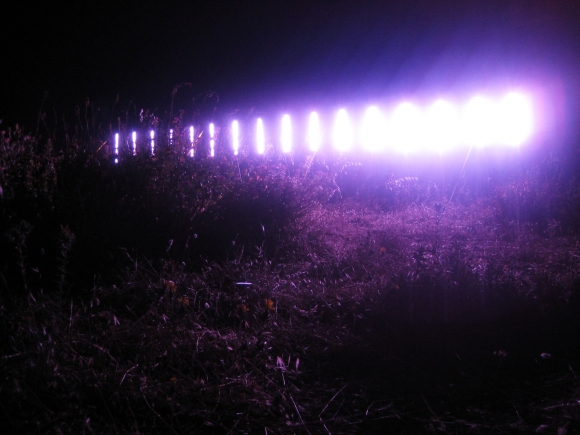
Arctic Opening: Mediterranean vegetation at night under remote polar light.
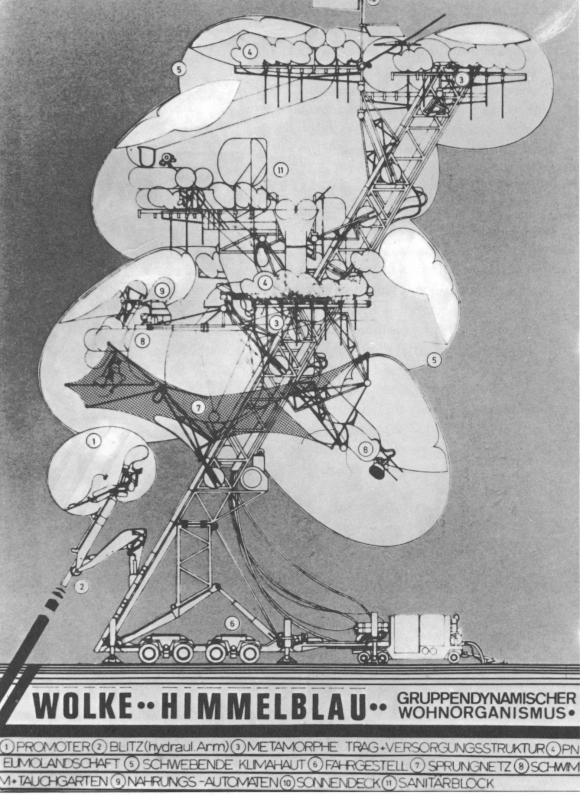
Of Pop and Prostheses: Vienna 1965-72
Related Links:
Monday, January 17. 2011
Des millions de Little Brothers nous surveillent
Via L'Hebdo, Christophe Schenk
---

Bien avant Facebook ou Twitter, Hasan Elahi a pris l’habitude de partager sur le Net ses allées et venues, ses faits et gestes.
Artiste et professeur à l’Université du Maryland, l’Américain de 38 ans se met en scène à travers un work in progress original, intitulé Tracking Transience: The Orwell Project.
Sur son site internet, des milliers de photographies apparaissent, sous la forme de mosaïques thématiques, instants quotidiens accumulés depuis plus de sept ans. Panneaux autoroutiers, assiettes remplies de nourritures variées, urinoirs et toilettes publics, rien n’est oublié pour façonner un carnet intime au format numérique, plus provocateur qu’égocentrique, moins geek que citoyen.
Démarche artistique et acte politique, le travail de Hasan Elahi trouve en effet son origine en juin 2002, à l’aéroport de Detroit. De retour d’un séjour au Sénégal, où il exposait ses œuvres, l’artiste – Américain, mais originaire du Bangladesh – est arrêté à la douane et interrogé par des agents du FBI. On le soupçonne de cacher des armes dans un entrepôt et de collaborer avec des réseaux terroristes.
Parmi les questions qui lui sont posées, l’une va déterminer son action future: où était-il le 12 septembre 2001, au lendemain des attentats contre les Twin Towers? «J’ai pu répondre grâce à mon Palm, raconte Hasan Elahi, dont l’agenda avait conservé mon emploi du temps.» Si elles lui ont sauvé la mise une fois, les nouvelles technologies pourraient bien lui servir à nouveau.
Offre et demande. Interrogé fréquemment durant six mois, puis blanchi après s’être soumis au détecteur de mensonge durant trois heures, Hasan Elahi n’est pas rassuré pour autant.
«Je parcours plus de 100 000 kilomètres par année et prends souvent l’avion, explique-t-il. Je leur ai donc demandé de me fournir un document officiel, qui me laverait de tout soupçon. Ils ont refusé, mais m’ont répondu que je pouvais leur téléphoner la veille de mon voyage et qu’ils feraient le nécessaire pour que je n’aie pas de problèmes.»
Prenant les agents du FBI au mot, il décide de les appeler avant chacun de ses déplacements à l’étranger. Avant de choisir d’aller plus loin encore et de mettre sa vie en ligne au jour le jour, via un site internet dédié.
Grâce au GPS intégré dans son téléphone portable, Hasan Elahi est localisable en temps réel, tandis que des photos ajoutées chaque heure documentent ses actions, de ses repas à ses activités professionnelles, en passant par ses rencontres.
«Quand j’ai constaté que le FBI avait un dossier sur moi, j’ai choisi d’appliquer un principe économique simple, explique-t-il, à savoir la loi de l’offre et de la demande. En inondant le marché d’informations à mon sujet, celles relevées par le FBI perdraient irrémédiablement de leur valeur.»
Une démarche à laquelle s’ajoute un second principe, toujours plus en vogue à l’heure du règne de Google et de l’impossible anonymat: c’est quand on en dit le plus qu’on en révèle le moins.
«Sur mon site, on trouve des tas de petites informations sur moi, mais aucune qui ait vraiment de l’importance ou de la valeur. Jusqu’à il y a peu, certaines des organisations qui m’invitaient pour des conférences ne parvenaient même pas à trouver mon âge.»
Contrôler son identité. Si certains de ses proches ont accueilli ce projet avec un brin de nervosité – Hasan Elahi prend également des photos lorsqu’il est invité chez des amis, tout en prenant soin de ne pas dévoiler d’éléments qui permettraient de les reconnaître – ils ont rapidement cessé d’y prêter attention.
«Depuis le début de mes travaux, la culture a beaucoup changé, observe l’artiste. Par exemple, mes parents sont aujourd’hui mes visiteurs les plus réguliers, tout heureux de pouvoir savoir où je suis en continu. D’une certaine manière, ce type de documentation est peut-être le rêve de nombreux parents aujourd’hui.»
Une démarche qui ne diffère finalement guère des habitudes apparues ces dernières années avec l’avènement des blogs puis des réseaux sociaux.
Des sites qui permettent de suivre à la trace ceux qui s’y inscrivent et semblent sonner le glas des secrets, à la manière de Wikileaks. A moins que ce ne soit le contraire.
«Il ne faut pas oublier qu’avec ces sites, nous sommes désormais à la fois producteurs et consommateurs d’informations, note Hasan Elahi. On peut donc prendre le contrôle du système dans le même temps que l’on s’y intègre.»
Ainsi, il ne s’agit plus d’être la simple victime des systèmes de surveillance, mais de rediriger ceux-ci, par les moyens qui nous sont donnés. «Aujourd’hui, il suffit d’avoir un téléphone portable pour pouvoir prendre des photos ou filmer des séquences. Big Brother a été supplanté par des millions de Little Brothers. Et je ne suis pas sûr qu’il apprécie vraiment.»
Un peu plus de huit ans après sa première confrontation avec le FBI, Hasan Elahi poursuit toujours son œuvre via son site web. Sans même s’en rendre compte.
«C’est devenu une habitude, au même titre que consulter mes mails, les messages sur mon répondeur ou les réactions sur ma page Facebook, observe-t-il. Surtout, j’ai pu mettre en place des mécanismes automatiques au point que je ne me rends même plus compte que j’alimente mon site.»
Relayé dans les circuits artistiques, médiatiques ou technologiques, Tracking Transience a fait la renommée de Hasan Elahi, le posant en analyste confirmé des mutations que connaissent nos identités sur le Net. Le FBI pensait tenir un dangereux terroriste, il a donné naissance à un activiste de l’ère numérique.
Related Links:
Monday, January 03. 2011
Remnants of the Biosphere by Biospheric Design
Old post but one of the most requested SPACEINVADING projects on archinect.com
Via bldgblog
---
Remnants of the Biosphere by Biospheric Design
Location: Arizona
Image Credits: Noah Sheldon "The structure was billed as the first large habitat for humans that would live and breathe on its own, as cut off from the earth as a spaceship," the New York Times wrote back in 1992, but the project was a near-instant failure.
Photographer Noah Sheldon got in touch the other week with a beautiful series of photos documenting the decrepit state of Biosphere 2, a semi-derelict bio-architectural experiment in the Arizona desert.
The largest sealed environment ever created, constructed at a cost of $200 million, and now falling somewhere between David Gissen's idea of subnature—wherein the slow power of vegetative life is unleashed "as a transgressive animated force against buildings"—and a bioclimatically inspired Dubai, Biosphere 2 even included its own one million-gallon artificial sea.
"The structure was billed as the first large habitat for humans that would live and breathe on its own, as cut off from the earth as a spaceship," the New York Times wrote back in 1992, but the project was a near-instant failure.
- Scientists ridiculed it. Members of the support team resigned, charging publicly that the enterprise was awash in deception. And even some crew members living under the glass domes, gaunt after considerable loss of weight, tempers flaring, this winter threatened to mutiny if management did not repair a growing blot on the project's reputation.
The entire site was sold to private developers in 2007, leaving the buildings still functional andopen for toursbut falling apart.
Sheldon was originally inspired to visit and photograph the site after reading in the New York Timesthat "suburban sprawl" had come to surround the once-remote research site.
Indeed, we read, real estate development has "conquered vast swaths of the Sonoran Desert. The Biosphere, miles from nowhere when it was built in the 1980s, is now within the reach of a building boom streaking north from Tucson and south from Phoenix (and which some demographers say will eventually join the two cities, once 100 miles apart)." Traffic jams are not infrequent where there were once country roads, and new suburbs have sprung up within just a few miles of the research site.
Now, like something straight out of J.G. Ballard, the property might someday be home to a development called Biosphere Estates.
Sheldon's images, reproduced here with his permission, show the facility advancing into old age. A vast biological folly in the shadow of desert over-development, the project of Biosphere 2 seems particularly poignant in this unkempt state.
The fertile promise of the microcosm has been abandoned.
In this context, Biosphere 2 could perhaps be considered one of architect Francois Roche's "buildings that die," a term Roche used in a recent interview with Jeffrey Inaba. Indeed, in its current state Biosphere 2 is easily one of the ultimate candidates for Roche's idea of "corrupted biotopes"; the site's ongoing transformation into suburbia only makes this corruption more explicit.
Watching something originally built precisely as a simulation of the Earth —the in "Biosphere 2" is meant to differentiate this place from the Earth itself, i.e. Biosphere— slowly taken over by the very forces it was meant to model is philosophically extraordinary: the model taken over by the thing it represents. A replicant in its dying throes.
fabric | rblg
This blog is the survey website of fabric | ch - studio for architecture, interaction and research.
We curate and reblog articles, researches, writings, exhibitions and projects that we notice and find interesting during our everyday practice and readings.
Most articles concern the intertwined fields of architecture, territory, art, interaction design, thinking and science. From time to time, we also publish documentation about our own work and research, immersed among these related resources and inspirations.
This website is used by fabric | ch as archive, references and resources. It is shared with all those interested in the same topics as we are, in the hope that they will also find valuable references and content in it.
Quicksearch
Categories
Calendar
|
|
July '25 | |||||
| Mon | Tue | Wed | Thu | Fri | Sat | Sun |
| 1 | 2 | 3 | 4 | 5 | 6 | |
| 7 | 8 | 9 | 10 | 11 | 12 | 13 |
| 14 | 15 | 16 | 17 | 18 | 19 | 20 |
| 21 | 22 | 23 | 24 | 25 | 26 | 27 |
| 28 | 29 | 30 | 31 | |||
